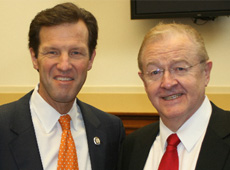The E.U. Should Stick to Its Guns on Brexit
Posted By: October 16, 2016
New York Times Editorial. Saturday, October 15, 2016
Britain and the European Union may be getting over the initial shock of the British demand for a divorce. Now comes the bitter fight. Already, both sides have staked out very different positions on immigration, an issue that promises to be the most contentious in the separation proceedings.
Germany, France, and other union members have argued that Britain must maintain open borders if it is to enjoy favorable access to Europe’s single market. Many British voters who chose to leave the bloc in June would like to see those borders more tightly regulated by the British government. However this issue is resolved, both sides have an obligation to find ways to minimize the economic damage to Britain and the rest of the union that a new relationship could bring. Formal negotiations are expected to start by the end of March.
The British prime minister, Theresa May, wants unfettered access to the European market, the world’s largest. Under her vision, Britain’s manufacturers would be able to sell products to customers in the bloc without paying duties, and bankers in London could serve businesses and investors anywhere in the union. But she and her colleagues insist on restricting immigration from other European Union countries.
Those demands are unacceptable to leaders like Chancellor Angela Merkel of Germany and President François Hollande of France who insist that the union can accept the free movement of goods, services, and capital only with countries that also accept the free movement of people. “There will be no compromises in this regard,” Donald Tusk, the president of the European Council said on Thursday. The union’s agreements with three nonmember countries — Iceland, Lichtenstein and Norway — include all four freedoms. Those countries also abide by the union’s regulations and contribute to its budget.
A common market cannot function properly if people are not allowed to move without having to obtain visas. Imagine how much more difficult it would be to do business in the United States if companies could not easily relocate employees to different states or if people could not freely move to take advantage of job opportunities.
The indivisibility of the four freedoms is also necessary to send a clear message to politicians and voters in France, Italy and other countries in the bloc who argue that their countries should also leave the union. Allowing Britain to cherry-pick its membership rules would encourage these separatists, greatly undermining the European project and making the region less stable, less prosperous and less tolerant. It would also set a dangerous example for other, non-European countries, the United States included, where politicians have demonized immigrants at a time when many people have seen incomes stagnate and are increasingly fearful of terrorism.
Interestingly, polls show that many Britons would accept a deal that kept the country’s borders open to other Europeans. In July, after the referendum, two-thirds of respondents said access to the European market should be a priority in negotiations while only 31 percent said the same about restricting free movement. There are 2.9 million people from other European Union countries living in Britain, making up 4.6 percent of the country’s population. About 1.2 million Britons live elsewhere in the union.
Even if it refuses to budge on immigration, Britain might still be able to negotiate a trade agreement with the union that gives it some modest economic benefits, like duty-free access for certain products. But the union is highly unlikely to give British banks and companies “passporting rights” to operate throughout the bloc. Losing these privileges would be a big blow to the economy, which is one reason the pound has fallen nearly 18 percent against the dollar since the referendum. That should be reason enough for Mrs. May to compromise on immigration.
Follow The New York Times Opinion section on Facebook and Twitter (@NYTopinion), and sign up for the Opinion Today newsletter.










